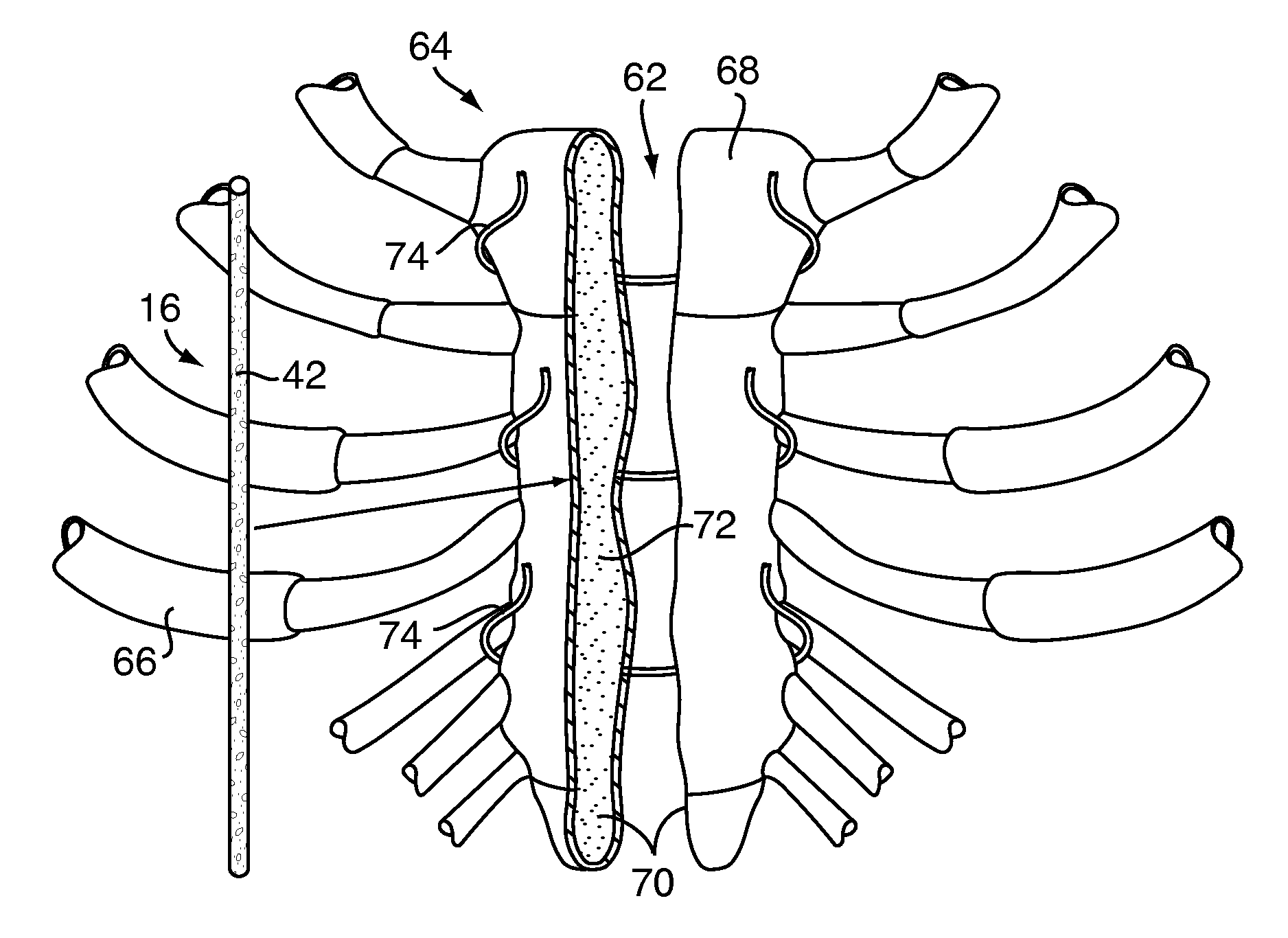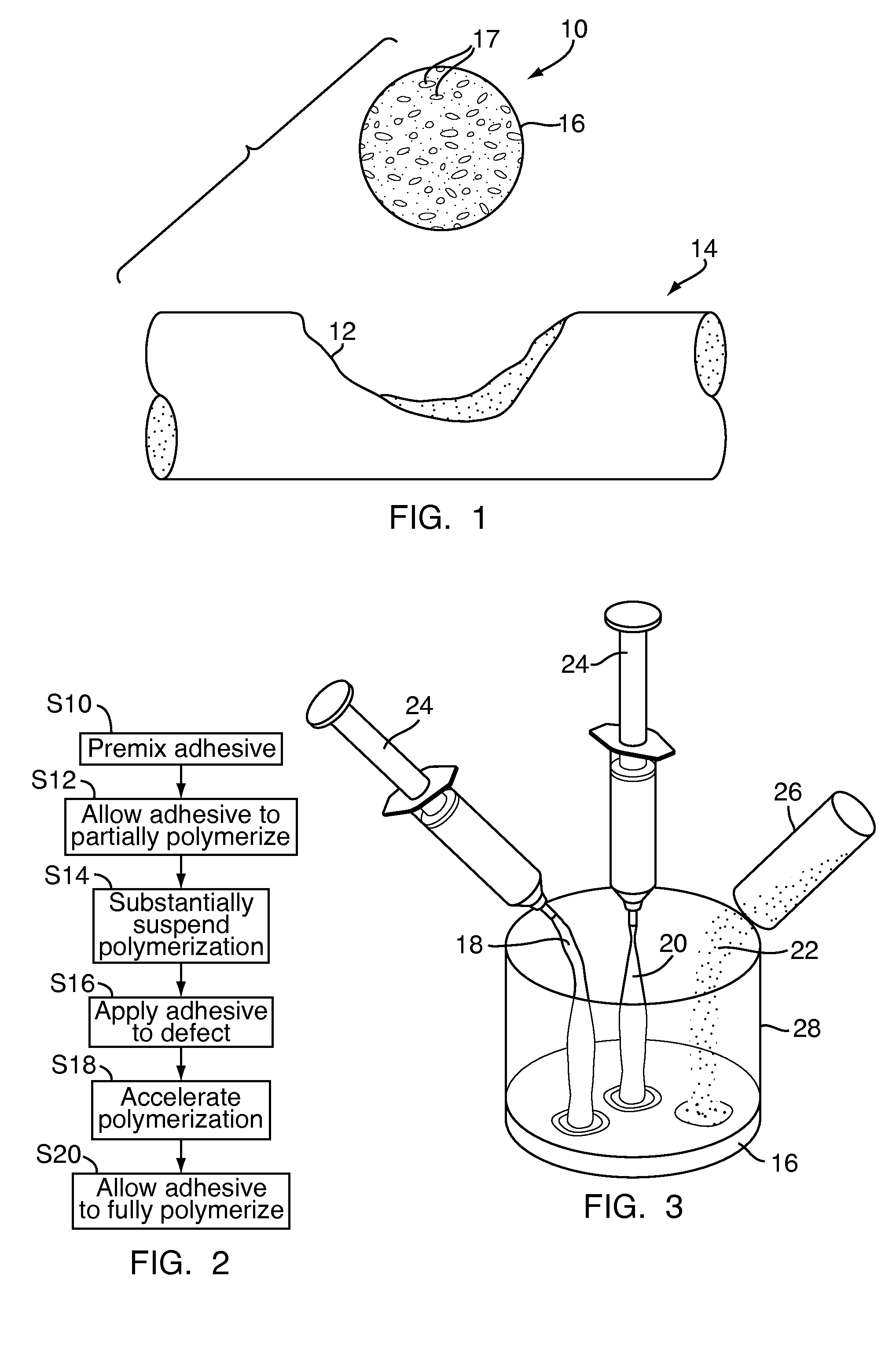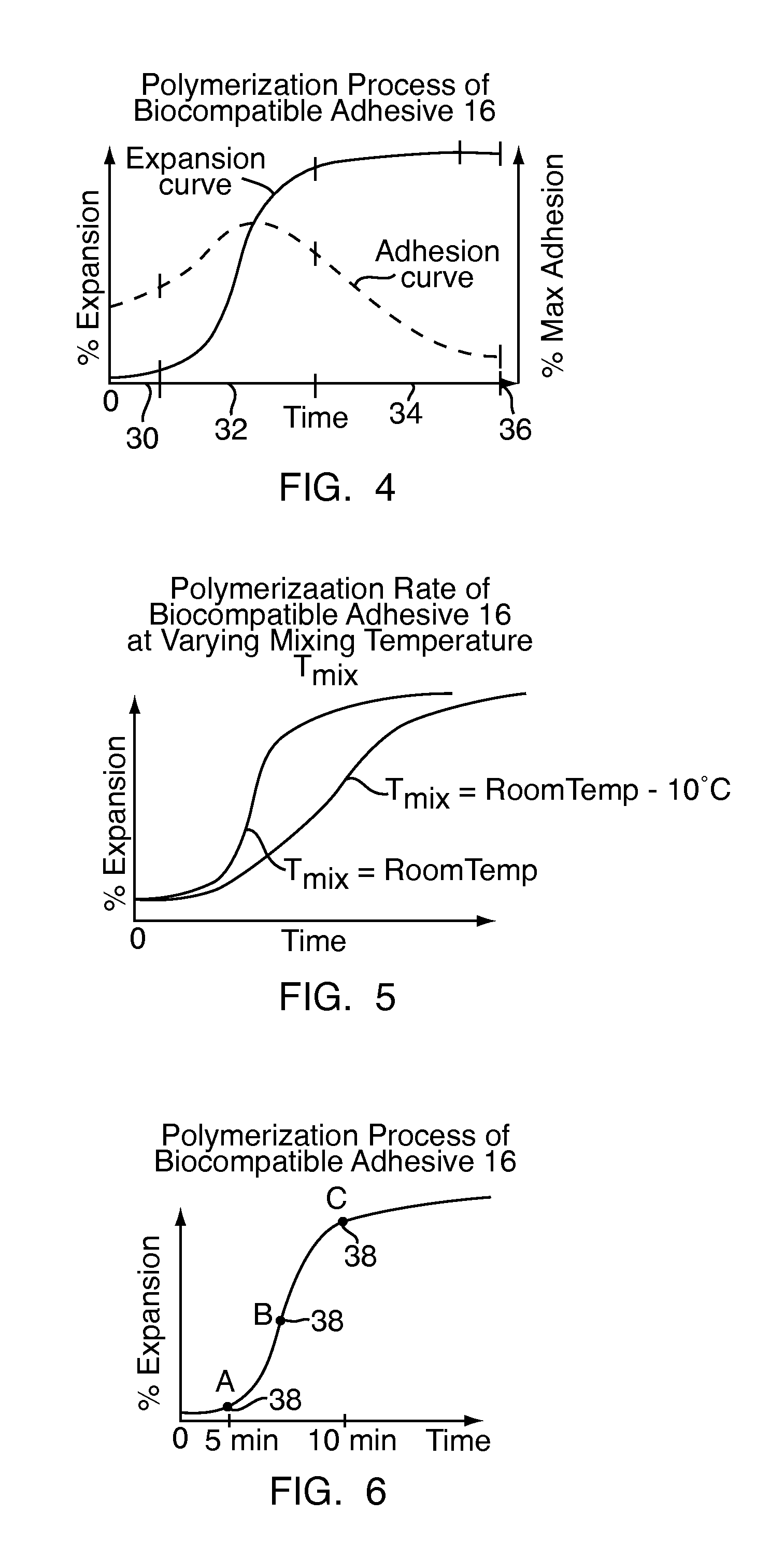Methods and devices for repairing bone defects
a technology for bone defects and bone adhesives, applied in the field of bone repair, can solve the problems of flexural, shear properties, and removal of bone parts that also need replacement, and achieve the effect of improving the handling and delivery of bone adhesives
- Summary
- Abstract
- Description
- Claims
- Application Information
AI Technical Summary
Benefits of technology
Problems solved by technology
Method used
Image
Examples
Embodiment Construction
[0043]Referring to FIG. 1, a bone defect filler 10, for repairing a defect 12 in a bone 14 of a patient, includes a biocompatible adhesive 16 that is partially polymerized. The biocompatible adhesive 16 may have pores 17 partially formed therein during the partial polymerization, as will be discussed in greater detail below. Polymerization of the biocompatible adhesive 16 has been substantially suspended, as will also be discussed in greater detail below, to provide for improved handling of the bone defect filler 10, to reduce the likelihood of contamination of the bone defect filler 10 and to ease delivery of the bone defect filler 10 to the defect 12.
[0044]Referring to FIG. 2, to form the bone defect filler 10, shown in FIG. 1, the biocompatible adhesive 16, shown in FIG. 1, is initially mixed at step S10. Once mixed, the biocompatible adhesive 16, shown in FIG. 1, is allowed to partially polymerize at step S12. Polymerization of the biocompatible adhesive 16, shown in FIG. 1, is ...
PUM
| Property | Measurement | Unit |
|---|---|---|
| temperature | aaaaa | aaaaa |
| diameter | aaaaa | aaaaa |
| pore size | aaaaa | aaaaa |
Abstract
Description
Claims
Application Information
 Login to View More
Login to View More - R&D
- Intellectual Property
- Life Sciences
- Materials
- Tech Scout
- Unparalleled Data Quality
- Higher Quality Content
- 60% Fewer Hallucinations
Browse by: Latest US Patents, China's latest patents, Technical Efficacy Thesaurus, Application Domain, Technology Topic, Popular Technical Reports.
© 2025 PatSnap. All rights reserved.Legal|Privacy policy|Modern Slavery Act Transparency Statement|Sitemap|About US| Contact US: help@patsnap.com



